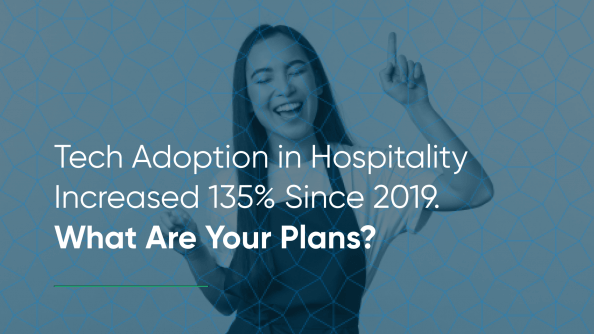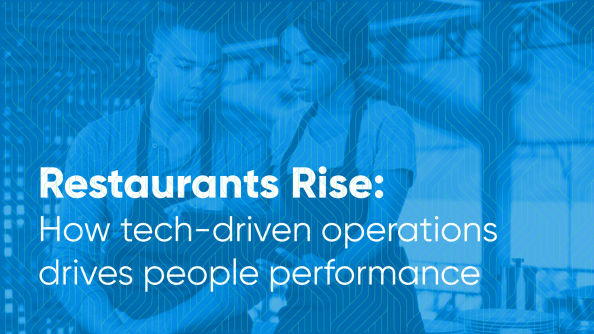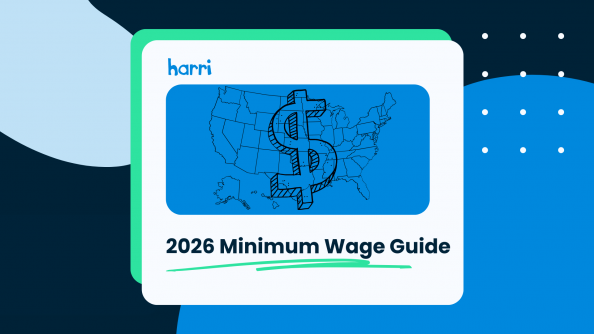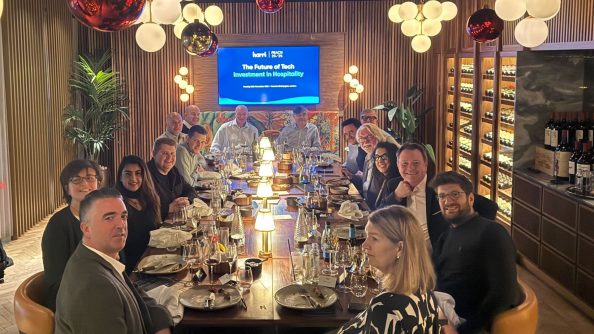Managing Hourly Workers? Here’s How to Plan Your Employee Experience Strategy
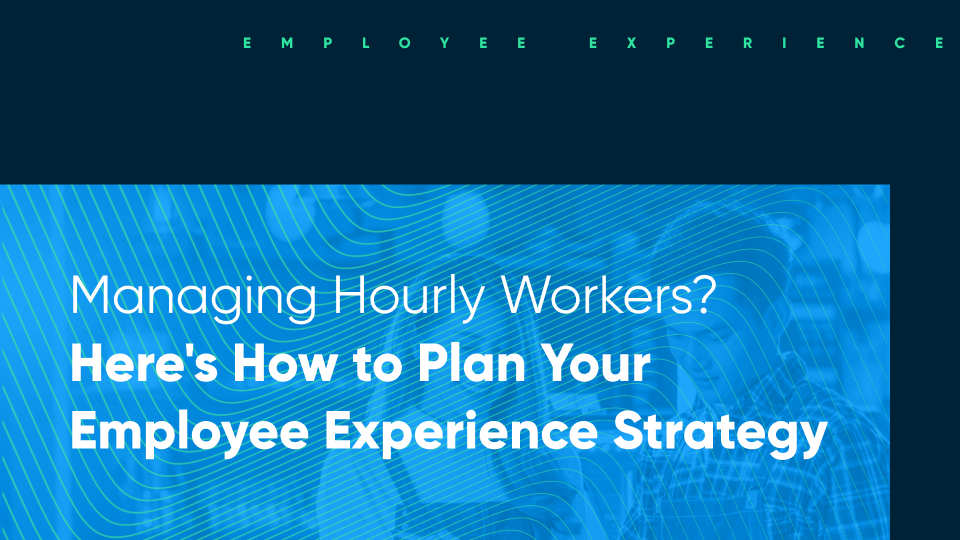
- By Harri Insider Team | May 12, 2021
If you thought making it past lockdowns, dine-in restrictions, and limited capacities meant a hospitality establishment was in the clear these days, yet another obstacle has emerged on this side of the pandemic.
Though full reopening measures are on the horizon even in states with the harshest of COVID-19 restrictions, many establishments are facing two new concerns:
- Filling open positions
- Employee retention
Of all the industries adversely affected when the world was turned upside down in early 2020, the hospitality sector was arguably one of the hardest hit. According to the National Restaurant Association, by the end of 2020, a staggering 17% of restaurants had closed permanently or long-term.
With fewer options for employment, the logical correlation would suggest a surplus of applicants for any one job opening. In this case, however, it seems that correlation is out the window (so you can certainly forget any hint of causation).
If employers are the sellers and prospective employees are buying, let’s just say it’s a buyer’s market right now in the hospitality world.
All this begs a question more crucial than ever – how do you attract new employees and keep the ones you already have from jumping ship to test out the new kid on the block?
Two words: employee experience.
We can chalk the labor shortage up to a number of reasons that all boil down to the employee experience. Benefits, compensation, scheduling, job satisfaction, and safety protocols all help an employee decide if your workplace is worth their time. If you can’t match up to the competition, employees will jump to the opportunity that presents itself — be it in the hospitality industry or otherwise.
And today’s hospitality operators will need an incredibly well-thought-out employee experience strategy in order to fill those open positions with team members who are in it for the long run.
What does a hospitality employee experience strategy look like?
Hospitality is a people’s business, and the success of your people determines operational success, customer satisfaction, brand recognition, and your business’ bottom line.
As such, an employee experience strategy should be considered an active and cross-functional initiative. It’s a strategy that should constantly be monitored and changed as needed to fit the particular company, its brand, and, of course, its employees.
It should also involve all departments, from management, to IT, to HR, to the executive level. But a successful employee experience strategy is never top-down. If your service-level employees aren’t involved in EX initiatives, your efforts will be in vain.
The heart of a successful employee experience strategy is approaching employees the way a company approaches its client base. The strategy should encompass the values the company presents its customers while also incorporating the different needs of its individual employees. Priorities and needs of different employees won’t always be the same. This is where personas come in.
Developing an understanding of the values, needs, and priorities of different kinds of employees within your company will help form these different personas. Note, they should be more detailed than the likes of manager, administrator, and hourly.
Tipped workers will have different expectations than non-tipped staff. What’s important to one employee who values growth and upward mobility will likely differ from an employee in the same role working part-time, balancing another job, or going to school. One may value a flexible schedule while the other may appreciate one that’s fixed and reliable. And their manager may appreciate spending as little time as possible playing Tetris to organize everyone’s schedule every week.
How to implement an employee experience strategy in hospitality
The employee experience has evolved into a complex and ever-changing initiative that will constantly be pivoting in response to (or ideally in anticipation of) employee needs.
Successful implementation of an effective EX strategy starts with having the right tools. Because the employee experience touches every aspect of operations and human capital management, a tech-driven approach to HCM processes is necessary for a successful EX strategy.
Scheduling is undoubtedly one of the most important, yet often overlooked, pieces of the employee experience puzzle. That’s because the schedule is the centerpiece of the employee experience. It dictates their earnings, their shift experience, and how they plan their lives outside of work. And a poor schedule is a high cause for high turnover.
Scheduling concerns are often of high priority in the hospitality industry where so many roles require non-traditional hours. But even for someone with minimal conflicts, non-traditional hours mean the ability to adjust one’s schedule without hassle is a big bonus.
Unlike traditional office jobs, labor requirements in hospitality are heavily defined by service demands. Particularly for those in tipped wage positions, consideration of busy and slow hours in regards to staffing is crucial. You’d be hard-pressed to find a tipped worker happy to stand around polishing silverware all day. While managers, likewise, don’t want to spend money on labor they don’t really need.
This is where intelligent scheduling shines.
An all-in-one scheduling solution empowers managers to create labor-efficient schedules while providing employees with shift times that meet their needs. Harri’s intelligent scheduling platform combines demand forecasting, historic sales data, employee skills, team availability, and shift preferences to provide a clear path to the most effective schedule.
Hospitality is wildly unpredictable, which means not all schedules will be perfect. But when your managers are writing and rewriting schedules for 100 employees across multiple locations, having this information in your arsenal is invaluable.
Clarity and transparency
A desire for clarity and transparency can’t be unique to the hospitality world, but it’s an important consideration for a variety of workplace personas. Hourly employees want to be sure they’ve been paid for things like overtime or missed lunch break penalties. Managers want to be sure all overtime is approved and avoid any ‘buddy punching ‘ or clock-in errors that milk the clock.
A timeclock that connects with payroll and labor reporting prevents clock-in errors, intentional or otherwise, and ensures transparent shift procedures. Harri’s time and attendance tools utilize biometric data and facial recognition technology to ensure the right employee clocks into the right location at the right time. Managers can opt to prevent early clock-ins, and if an employee clocks in late at a manager’s request (such as during a service lull), they have the option to flag that in the timeclock.
And if you operate in states like California that require employees to waive and unwaive breaks each day, break waivers are available at the clock-in for employees to complete (or change) each shift. Not only does this take a compliance burden off of your managers, but it ensures full break transparency between team members while ensuring every employee is entitled to paid and unpaid breaks.
On the topic of clarity, have you ever found yourself on a busy night where everyone’s stretched thin and the message just doesn’t make its rounds to half of your service staff that there’s a special for the day, a new wine, changes to the menu, or multiple events going on? Then the next thing you know that, despite your best efforts, and half the staff has no idea what’s going on.
It’s frustrating for the chef. It’s frustrating for the employee to present the wrong information to a guest. And it’s frustrating (and awkward) for the guest who’s left wondering if the staff knows anything about their workplace.
Harri’s timeclock function offers the ability to present announcements to an employee when they clock in. It’s like a pre-pre-shift, in case there’s no time for a traditional, in-person session.
But transparency can be so much more than service announcements. Through the timeclock, you can automatically wish employees a happy birthday, highlight work anniversaries, or share team photos after a job well done. It’s an excellent way to bring teams together and emphasize the small details that turn a good employee experience into a great one.
Employee sentiment and morale
We’ve all been to an establishment – be it a coffee shop, hotel check-in, or dinner at a new restaurant, and thought, ‘Wow, the entire staff is miserable. This must be a terrible place to work.’ On the flip side, we’ve all walked away from a service experience so pleasant and above par that it stands out far beyond the food, beverage, even, or room itself.
Happy staff, happy clientele. Doesn’t have quite the ring of ‘happy wife, happy life,’ but you get the idea. Checking in on the overall employee morale is crucial in hospitality. It translates directly to the guest experience. This should be done on a micro, individual level.
Does your team have a process in place to gauge employee sentiment? If not, you’ll have no way to catch early signs of employee turnover, Your employee experience efforts will be uninformed and as a result, less effective.
Harri’s timeclock is a two-way communications tool and can be used to gauge employee sentiment. When a team member clocks out, they have the option to rate their shift through the timeclock. If an employee clocks one or multiple dissatisfactory shifts, managers can reach out to learn the cause. If it’s something avoidable, such as scheduling dissatisfaction, that can be rectified before potentially losing the employee.
And because this entire process is executed automatically through an all-in-one HCM platform, managers don’t need to implement additional procedures to begin measuring employee sentiment.
But the benefits don’t stop there.
One of the first indications that an employee is ready to turnover is consecutively late clock-ins. The beauty of gauging employee sentiment through an all-in-one HCM platform is that you have the ability to aggregate vital datapoints like employee time and attendance, shift sentiments, average shift length, sales per shift, overall performance, and much more.
This provides managers with a real-time turnover risk assessment for each member of staff — a critical component during a time in which employee retention is of the utmost importance. It can also be used to optimize employee schedules by helping managers understand employees’ strengths and weaknesses.
This feature also allows you to track hiring, interviewing, and onboarding procedures, emphasizing an important concern for the industry as it currently stands. You better believe in an industry like hospitality, where current job openings are plentiful, that perfect new employee you hired may have received other offers. Keep track of that onboarding process and hiring speed. Don’t leave a new candidate hanging unless you can afford to pass them up to the next highest bidder. Monitoring the process and speed with which your company follows through is key.
Personalize your hospitality employee experience using an all-in-one HCM platform
Competition to hire and retain quality staff is stiff these days, but incorporating a strong employee experience strategy into your company culture can give you a foundational leg up. There is no one perfect EX solution that can be applied to every workplace.
It has to be an active strategy across multiple departments, one that requires getting to know your employees, understanding their needs and priorities, and figuring out how they work together. Taking advantage of the right tools can make the process seamless, efficient, and effective.











